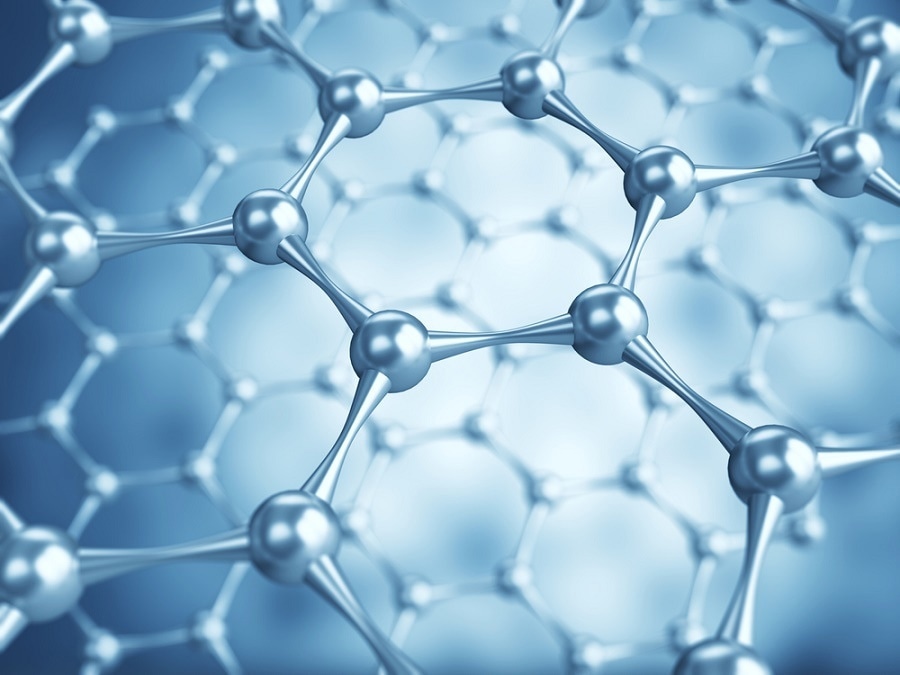
Image Credit: Anna Kireieva | Shutterstock.com
Discovered less than a decade ago, graphene is a “super material” that has engineers in many different fields excitedly pursuing various uses for it. Graphene is made of carbon in a honeycomb-lattice and is just one atom thick. It is a very good conductor of heat and electricity, virtually transparent, highly flexible, and super strong.
The material has also been described as a disruptive technology, because it appears poised to replace existing technologies and overpower markets in the process. Graphene could be used to either improve existing devices or create something that has never been seen before.
Wide Array of Revolutionary Applications
The development of bionic devices is just one of the mind-blowing applications of graphene. In 2014, engineers from the Technical University of Munich in Germany published a paper that described how graphene could be used to create an interface between a bionic eye and the optic nerve. Graphene would be used to make an artificial retina that can convert light into electrical impulses, which could then be sent to the brain via the optic nerve.
Graphene could also has uses on a global scale, employing it to make filters capable of desalinating seawater. According to a 2012 paper, the nanometer-scale pores in graphene could allow water molecules to pass through, yet stopping the salt from passing though.
The carbon miracle material could also be used to soak up radioactive waste in the event of a horrific nuclear disaster. An international research team found that chips of graphene oxide rapidly attach to radioactive atoms and compact them into solids. The chips are soluble in liquids, meaning they would be ideal for use in water.
Improving Existing Technology
In addition to graphene's potential to develop new technologies, it is also expected to significantly improve many existing technologies, some of which are discussed below;

Image Credit: BONNINSTUDIO | Shutterstock.com
Increased Wireless Power
The frustration of slow wireless uploading could be resolved with a graphene antenna, which has the potential to provide speeds of around one terabit per second. Researchers at Georgia Tech University have written a paper saying at close range it may be possible to upload at rates of around 100 terabits per second.
The antenna would be made from narrow strips of graphene, arranged to allow for transmission at the terahertz frequency. Transmissions at this frequency would communicate with plasmonic waves-oscillations of electrons at the exterior of the graphene strip to deliver and receive data.
Enhancing Sporting Equipment
Graphene could also revolutionize sports by improving existing equipment. Tennis racket-maker HEAD recently unveiled a series of rackets that uses graphene in the shaft. By placing graphene there, the rackets’ weight is shifted primarily to the grip and the
head, where it is most useful, the company said.
The line of rackets has been endorsed by top ranked tennis icon Novak Djokovic.
The Potential to Improve Power and Electrical Applications
Combined with graphene’s unique molecular structure, the material’s ability to conduct electricity presents exciting possibilities.
UCLA researchers found one potential application is the creation of a phone battery capable of charging in just five seconds. In addition to super fast charging, the graphene batteries would be non-toxic and extremely affordable. The technology could also be scaled up to power laptop computers or electric cars, with the latter charging in about the same time it takes to fill up a tank of gas.
Graphene is also being considered for use in a smart electrical grid. The material’s energy harvesting, storage and consumption possibilities – specifically its reduction in waste heat – are expected to drive the next generation of energy delivery technologies and help to begin a new age of renewable energy.
References and Further Reading
Artificial Retina: Physicists Develop an Interface to the Optical Nerve
Water Desalination Across Nanoporous Graphene
Another Tiny Miricle: Graphene Oxide Soaks up Radioactive Waste
Graphene Batteries Offer 5-Second iPhone Charging
Graphene's Newest Trick is Improving Your Tennis Game
Disclaimer: The views expressed here are those of the author expressed in their private capacity and do not necessarily represent the views of AZoM.com Limited T/A AZoNetwork the owner and operator of this website. This disclaimer forms part of the Terms and conditions of use of this website.